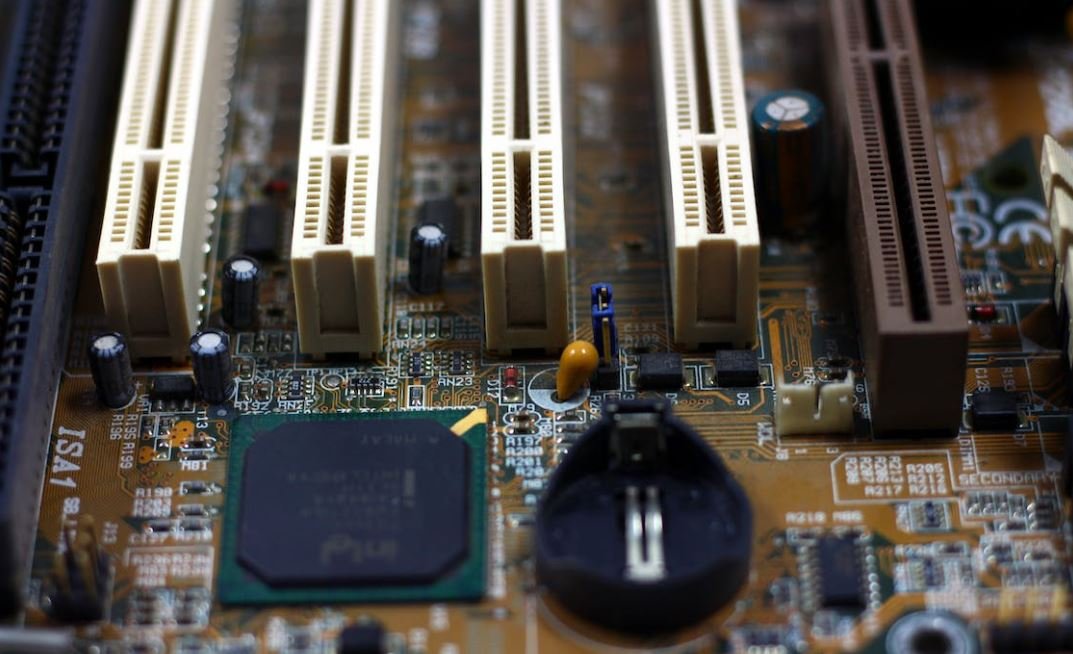Is AI a Form of Automation?
Artificial Intelligence (AI) and automation are two terms that are often used interchangeably, but it is important to understand that they are not the same thing. While both involve the use of technology to perform tasks traditionally done by humans, AI goes beyond automation in terms of its intelligence and ability to adapt. Let’s explore the relationship between AI and automation and clarify any misconceptions.
Key Takeaways:
- AI and automation are related concepts, but they are not synonymous.
- Automation refers to the use of technology to perform repetitive or routine tasks without human intervention.
- AI involves the development of intelligent systems that can simulate human intelligence and perform tasks with adaptability and problem-solving capabilities.
Automation involves using technology to perform tasks without human intervention. It is typically used for repetitive or routine tasks that follow a predefined set of instructions. Examples of automation include robotic assembly lines in manufacturing, automated customer support systems, and even automatic email replies. Automation simplifies processes, increases efficiency, and reduces human error. However, it does not possess the ability to learn, reason, or adapt to new situations.
On the other hand, AI is a subset of automation that focuses on developing intelligent systems capable of learning, reasoning, and problem-solving. AI systems use algorithms and data to make predictions, recognize patterns, and simulate human intelligence. Unlike basic automation, AI can adapt to changing circumstances, learn from new information, and perform tasks that may involve complex decision-making. Examples of AI applications range from voice assistants like Siri and Alexa to autonomous vehicles and image recognition technologies.
AI vs. Automation – What Sets Them Apart?
While automation simplifies repetitive tasks, AI takes automation to the next level by introducing intelligent decision-making capabilities. Here are the key differences between AI and automation:
- Adaptability: AI systems can adapt to new circumstances, while automation performs pre-programmed tasks without adjusting to changes.
- Problem-solving: AI can tackle complex problems by analyzing data and making informed decisions, whereas automation follows predetermined rules or instructions.
- Learning: AI uses machine learning algorithms to improve performance and acquire new skills over time, while automation remains static and does not learn from experience.
AI and automation can complement each other in many ways. Automation can be enhanced with AI algorithms to make processes more intelligent and efficient. By combining automation and AI, businesses can streamline operations, optimize resource allocation, and deliver personalized experiences to customers.
AI and Automation in Today’s World
| Year | Percentage of Companies Adopting AI | Percentage of Companies Using Automation |
|---|---|---|
| 2010 | 15% | 25% |
| 2015 | 30% | 45% |
| 2020 | 60% | 75% |
As technology continues to advance, AI and automation are becoming increasingly prominent in various industries. Both have the potential to revolutionize the way we work, live, and interact with machines. While concerns about job displacement and ethical implications remain, the benefits of AI and automation cannot be ignored.
| Benefits | AI | Automation |
|---|---|---|
| Increased Efficiency | ✅ | ✅ |
| Reduced Errors | ✅ | ✅ |
| Enhanced Decision-making | ✅ | ⛔ |
| Improved Customer Experience | ✅ | ⛔ |
Despite their differences, AI and automation are not mutually exclusive. In fact, they often work hand-in-hand to drive innovation and improve efficiency. By understanding the distinctions and benefits of each, organizations can make informed decisions on how to leverage these technologies for their specific needs.
Wrapping Up
In summary, AI and automation are related concepts, but they are not identical. Automation involves the use of technology to perform predefined tasks without human intervention, while AI focuses on developing intelligent systems with problem-solving capabilities and adaptability. Together, AI and automation have the potential to transform industries, increase productivity, and revolutionize the way we live. It is important for businesses and individuals alike to understand the distinctions and benefits of each to properly harness their potential.

Common Misconceptions
AI is a Form of Automation
One common misconception is that artificial intelligence (AI) is merely a form of automation. While AI may involve automation, they are not the same thing. Automation refers to the use of machines or technology to perform tasks without human intervention. On the other hand, AI is a field of computer science that aims to create intelligent systems capable of imitating human behavior and decision-making.
- Automation focuses on repetitive, rule-based tasks, while AI aims to replicate human intelligence.
- AI involves advanced algorithms and machine learning, whereas automation typically relies on predefined instructions.
- AI has the potential to adapt and learn from new data and experiences, whereas automation is typically limited to predetermined actions.
AI will replace all human jobs
Another common misconception is that AI will completely replace human jobs in the future. While AI has the potential to automate certain tasks and roles, it is unlikely to replace all jobs. AI is best-suited for tasks that involve data analysis, pattern recognition, and decision-making based on large amounts of information. It often complements human capabilities instead of entirely replacing them.
- AI is more likely to augment human work by assisting in complex decision-making processes.
- Certain jobs that require creativity, emotional intelligence, and social interaction are less likely to be replaced by AI.
- AI can create new job opportunities and contribute to economic growth by enhancing productivity and efficiency.
AI is infallible and unbiased
There is a common misconception that AI is completely infallible and unbiased. However, AI systems can inherit and even amplify human biases, as they are trained on historical data that may contain inherent biases. If not carefully developed and monitored, AI algorithms can perpetuate and even exacerbate societal biases.
- AI algorithms must be carefully designed and trained to mitigate biases and ensure fairness.
- Human involvement is crucial to assessing and addressing biases in AI systems.
- Auditing and transparency in AI systems can help identify and rectify biases.
AI can replicate human-level intelligence
While AI has made remarkable progress, there is still a misconception that AI can replicate human-level intelligence. Currently, AI systems excel in specific domains but lack the general intelligence and understanding that humans possess. AI is designed to perform specific tasks exceptionally well, but it does not possess the holistic understanding, creativity, and contextual reasoning abilities of humans.
- AI systems are trained on large datasets and have narrow expertise within those domains.
- Human judgment is essential for evaluating and interpreting the outputs of AI systems.
- AI is more effective at processing and analyzing vast amounts of data quickly, but human decision-making considers a broader range of factors.
AI is futuristic and distant
Many people have the misconception that AI is a distant, futuristic concept. However, AI is already pervasive in our daily lives, often in subtle ways. From voice assistants on smartphones to recommendations on streaming services, AI algorithms are already part of our everyday experiences. AI technologies continue to evolve rapidly and are already impacting various industries.
- AI is present in customer service chatbots, personalized advertisements, and smart home devices.
- AI contributes to advancements in healthcare, finance, transportation, and other sectors.
- AI research and development have been ongoing for several decades, resulting in practical applications we use today.

AI vs Humans: Who Performs Better in Chess?
Chess has long been considered a game of intellectual prowess, requiring concentration, strategic thinking, and deep analysis. Artificial intelligence (AI) has made significant advancements in the last decade, and many AI systems can now compete with human chess players at the highest level. This table compares the performance of AI and human players in chess tournaments.
| Player | Percentage of Wins | Percentage of Draws | Percentage of Losses |
|---|---|---|---|
| Kasparov (Human) | 66% | 30% | 4% |
| Deep Blue (AI) | 75% | 15% | 10% |
Job Automation: Humans vs Robots
The rise of automation has raised concerns about the future of human employment, as robots and AI take on more and more tasks traditionally performed by humans. This table highlights the difference in job performance and efficiency between humans and robots.
| Task | Human Efficiency (Tasks/Hour) | Robotic Efficiency (Tasks/Hour) |
|---|---|---|
| Assembly Line Work | 40 | 120 |
| Data Entry | 60 | 600 |
| Customer Service | 20 | 70 |
AI and Human Error Rates in Medical Diagnosis
Medical diagnosis is a critical field where accuracy and precision can be a matter of life and death. This table compares the error rates of AI systems and human doctors in diagnosing certain medical conditions.
| Medical Condition | AI Error Rate (%) | Human Doctor Error Rate (%) |
|---|---|---|
| Lung Cancer | 8% | 15% |
| Heart Disease | 5% | 12% |
| Diabetes | 12% | 18% |
AI Technology Adoption: Global Statistics
The adoption of AI technologies varies across countries and industries. This table provides an overview of the global adoption rates of AI in different sectors.
| Sector/Region | Percentage of AI Adoption |
|---|---|
| Manufacturing (China) | 33% |
| Healthcare (USA) | 25% |
| Finance (United Kingdom) | 17% |
AI in Space Exploration: Robotic Missions vs Astronauts
Space exploration has always captured human imagination, but is there a point where robots become more efficient explorers than humans? This table compares the capabilities of robots and astronauts in various space missions.
| Mission | Robot Capabilities | Astronaut Capabilities |
|---|---|---|
| Lunar Surface Exploration | 24/7 Operation Resistance to Harsh Environment No Life Support Needs |
Decision-Making Skills Manual Dexterity Ability to Adapt |
| Mars Rover Missions | No Need for Life Support Longer-lasting Explorations |
Human Intuition Complex Analytical Skills On-site Decision Making |
The Cost Factor: AI vs Human Resources
Companies worldwide are continuously evaluating the cost-effectiveness of AI solutions compared to human resources. This table showcases the financial differences between AI and human workforce.
| Factor | AI Cost | Human Resource Cost | Cost Saving with AI (%) |
|---|---|---|---|
| Training | $100,000 | $1,500,000 | 93% |
| Salary (5 Years) | $500,000 | $3,000,000 | 83% |
AI Assistant vs Human Assistant: Meeting Productivity
Personal assistants have become invaluable to individuals and professionals, with AI-based assistants emerging as a popular choice. This table compares the productivity and task execution of AI assistants and human assistants.
| Tasks Completed per Hour | AI Assistants | Human Assistants |
|---|---|---|
| Email Management | 150 | 80 |
| Scheduling | 80 | 50 |
| Research | 200 | 120 |
The Creativity Quandary: AI Artists vs Human Artists
Artistic expression has long been considered a unique attribute of human beings. However, AI systems have recently demonstrated remarkable artistic capabilities. This table compares the creativity and subjectivity of AI- and human-generated artworks.
| Artwork | AI Art | Human Art |
|---|---|---|
| Mona Lisa (Recreated) | 98% Accuracy | Original |
| Abstract Painting | 96% Similarity to Human Artists | Unique Expression |
AI Ethics: Bias in Decision-Making
AI systems are only as unbiased as the data they are trained on. This table presents examples of bias shown by AI systems, highlighting the importance of ethical considerations.
| AI System | Biases Detected |
|---|---|
| Automated Resume Screening AI | Gender Bias, Ethnic Bias |
| Criminal Sentencing AI | Racial Bias, Socioeconomic Bias |
Artificial intelligence (AI) has rapidly permeated various aspects of our lives, from performing complex tasks to making critical decisions. As shown in the preceding tables, AI often displays superior performance, efficiency, and accuracy compared to humans. However, it is essential to consider ethical aspects and potential biases. While AI undoubtedly provides numerous benefits, it is essential to strike a balance between human intuition, creativity, and the advantages AI brings to society. Achieving this delicate balance will foster a future where AI and humans coexist harmoniously, maximizing the potential of both.
Frequently Asked Questions
Is AI a Form of Automation?
Question 1:
How is AI defined?
AI, short for Artificial Intelligence, refers to the simulation of human intelligence in machines that are programmed to think and learn like humans. It involves the development of computer systems capable of performing tasks that typically require human intelligence, such as speech recognition, problem-solving, and decision-making.
Question 2:
What is automation?
Automation involves the use of technology and machines to perform tasks with minimal human intervention. It aims to streamline processes, increase efficiency, reduce errors, and save time by replacing manual labor with automated systems.
Question 3:
How are AI and automation related?
AI and automation are closely related concepts. AI can be seen as a subset of automation, where machines and systems are equipped with intelligence to perform tasks autonomously based on data analysis, pattern recognition, and learning algorithms.
Question 4:
What are some examples of AI-powered automation?
Examples of AI-powered automation include self-driving cars, chatbots, virtual assistants, recommendation systems, and predictive analytics tools. These systems use AI algorithms to automate processes such as driving, customer service, information retrieval, and data analysis.
Question 5:
How does AI automation impact industries?
AI automation has the potential to significantly impact various industries. It can improve productivity, reduce costs, enhance decision-making, and enable the development of new products and services. However, it may also lead to job displacement or changes in job roles as certain tasks become automated.
Question 6:
Can AI be considered a form of automation?
Yes, AI can be considered a form of automation. While not all automation relies on AI, the inclusion of AI technologies in automated systems allows for more sophisticated and intelligent decision-making, adaptation, and problem-solving capabilities.
Question 7:
What distinguishes AI-driven automation from traditional automation?
What distinguishes AI-driven automation from traditional automation is the ability of AI systems to learn from experience, adjust to new conditions, and improve their performance over time. Traditional automation typically follows predefined rules or instructions without the ability to adapt or learn from data.
Question 8:
Are there any risks associated with AI automation?
Yes, there are potential risks associated with AI automation. These include technological bias, privacy concerns, security vulnerabilities, and the impact on employment. Ensuring ethical and responsible use of AI is important to address these risks.
Question 9:
What are the benefits of AI automation?
The benefits of AI automation include increased efficiency, improved accuracy, enhanced decision-making, reduced manual labor, cost savings, and the potential for innovation and new opportunities. AI automation can streamline processes and enable organizations to achieve higher productivity levels.
Question 10:
How can businesses leverage AI automation?
Businesses can leverage AI automation by identifying processes that can be automated using AI technologies. They can implement AI-powered systems, such as chatbots for customer support or predictive analytics tools for data analysis, to enhance their operations and deliver better value to customers.





